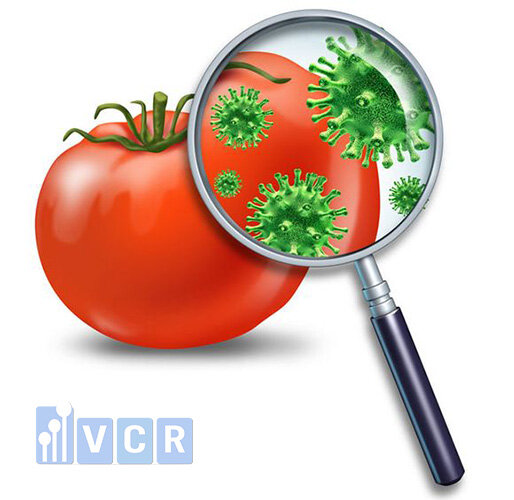What is TQM? 8 TQM fundamental principles
Total Quality Management (TQM) is a well-known approach to quality management. This philosophy centers on guiding and attaining excellence in quality across all facets of an organization. It underscores continuous improvement, engaging all staff in the quest for customer satisfaction.
In this VCR's article, let's explore and learn more about TQM, which stands for Total Quality Management.
What is TQM?
Total Quality Management is a well-known approach to quality management. This philosophy centers on guiding and attaining excellence in quality across all facets of an organization. It underscores continuous improvement, engaging all staff in the quest for customer satisfaction.
TQM cultivates a culture deeply rooted in quality, promoting teamwork, proactive resolution of issues, and a dedication to excellence. By embedding quality into every process and department, TQM strives to eradicate defects, streamline operations, minimize waste, and elevate overall performance, thus securing enduring success and competitiveness in the marketplace.
History of TQM
TQM dates back to the 1920s when the science of statistics was applied to Quality control in an industrial setting. Walter A. Shewhart, an engineer at Western Electric and Bell Telephone Laboratories, created a statistical control chart in the mid-1920s and then published Economic Control of Quality of Manufactured Product in 1931. Although the PDCA model (Plan - Do- Check - Act) is often called the Deming Cycle, Deming himself credited Shewhart with its creation. Deming later went on to advocate for a plan-do-study-act model.

Quality control methods evolved in subsequent decades, with industrial engineer Joseph Juran first employing Shewhart's methods and, later, in 1951, publishing his influential book, Juran's Quality Control Handbook.
Read more: 7 steps to building an effective quality control plan
Deming further developed Shewhart's ideas in post-World War II Japan, where the U.S. government had positioned him to advise Japanese leaders on the rebuilding efforts taking place there in the late 1940s and 1950s. Working with the Union of Japanese Scientists and Engineers, Deming taught and lectured on statistical quality control, while adding his own ideas about quality control in the process. Among these teachings was Deming's belief that ordinary workers had a role to play in quality control.
The method that evolved during the 1950s and 1960s eventually became known as Total Quality Management. Many credit the Japanese application of TQM as a significant contributor to the country's economic recovery following World War II, as well as its midcentury industrial successes.
Organizations worldwide took note of Japan's successes using TQM. U.S. producers throughout the 1970s and 1980s adopted quality and productivity methods, including TQM, to better compete in the increasingly global marketplace.
Although Deming, Juran, Shewhart and others published numerous papers and books on TQM, many organizations adopted different TQM trends or only parts of the TQM principles and evolved some of TQM's ideas to meet their own needs.
Moreover, as business needs for efficiency, productivity and quality have further evolved, many organizations have adopted other, more modern management techniques. Although TQM is still influential, other management techniques, such as Six Sigma and lean manufacturing, which better address organizational goals for the 21st century, have replaced it in many businesses.
How does TQM work?
Total Quality Management (TQM) emphasizes continuous improvement by using data and metrics for informed decision-making, fostering a culture of teamwork and innovation, and aligning strategies with customer needs. A core principle of TQM is customer satisfaction, which means meeting and exceeding customer expectations.
 Quality is integral to all aspects of operations, aiming for excellence in products, services, and internal processes while adapting to changing market demands. The result of such a quality-focused system is satisfied customers.
Quality is integral to all aspects of operations, aiming for excellence in products, services, and internal processes while adapting to changing market demands. The result of such a quality-focused system is satisfied customers.
Closely related to TQM is the concept of Kaizen, a Japanese term meaning "continuous improvement." This concept focuses on incremental changes made by every employee, making it ideal for organizations seeking a culture of ongoing, small-scale improvements. Kaizen promotes employee engagement, fosters creativity, and is particularly effective in environments where innovation and adaptability are crucial.
How important is TQM?
Total Quality Management (TQM) positively impacts both employee and organizational development.
When all employees prioritize quality management and continuous improvement, companies can cultivate and sustain cultural values that drive long-term success for both customers and the organization. TQM's emphasis on quality helps organizations identify skill gaps among employees and determine the training, education, or mentoring needed to address those deficiencies.

TQM also fosters teamwork by promoting the formation of cross-functional teams and encouraging knowledge sharing. Enhanced communication and coordination across different groups deepen institutional knowledge and provide companies with greater flexibility in deploying personnel.
8 TQM fundamental principles
Total Quality Management (TQM) is a customer-focused approach that emphasizes continuous improvement in business operations. It aims to ensure that all employees work towards the common goals of enhancing product or service quality and refining production procedures. TQM is defined by several guiding principles:
- Customer Focus: The primary focus of TQM is to meet and exceed customer expectations. All activities and efforts are directed toward understanding and fulfilling customer needs and preferences.
- Leadership Commitment: Effective leadership is crucial for TQM implementation. Leaders must provide clear vision, direction, and support, fostering an environment where quality improvement is a shared goal.
- Employee Involvement: Every employee, from top management to the shop floor, should be involved in the TQM process. Employee engagement and empowerment are essential for driving continuous improvement and innovation.
- Process Approach: A systematic approach to managing processes ensures that activities are organized and efficient. This involves identifying, understanding, and managing interrelated processes as a coherent system to improve the organization’s effectiveness and efficiency.
- Continuous Improvement: TQM emphasizes ongoing improvement in all areas of the organization. Continuous improvement involves regularly assessing processes, products, and services to identify opportunities for enhancement.
- Fact-Based Decision Making: Decisions should be based on the analysis of accurate, relevant data. Using data and metrics to inform decisions helps in understanding variations, predicting outcomes, and making objective improvements.
- Systematic Approach to Management: Understanding how different processes interrelate and affect each other allows for better coordination and alignment. A systematic approach ensures that all parts of the organization work together harmoniously towards common objectives.
- Mutually Beneficial Supplier Relationships: Building strong, collaborative relationships with suppliers is crucial for ensuring consistent quality and fostering innovation. Mutual trust and beneficial relationships with suppliers enhance the ability to create value.

What are TQM benefits?
Improved Customer Satisfaction: TQM emphasizes understanding customer needs and expectations. It involves regularly gathering feedback from customers and making changes based on this feedback to improve products or services. As a result, customer satisfaction levels tend to be higher in organizations that use TQM.
Enhanced Operational Efficiency: TQM encourages systematic processes and standardization. This reduces the chance of errors and rework, leading to better utilization of resources and time. In turn, this improves operational efficiency.
Increased Competitive Advantage: TQM’s focus on quality can differentiate an organization from its competitors. Companies can build a strong brand reputation and gain a competitive advantage by consistently delivering high-quality products or services.
Reduced Costs: TQM emphasizes defect prevention over defect detection. By catching errors early in the process, the cost of fixing them is much lower than if they were found later. This leads to significant cost savings.
Boosted Employee Morale: TQM involves all employees in quality improvement, fostering a sense of ownership and involvement. This collaborative culture can boost morale and job satisfaction, increasing productivity.
Greater Market Share: As TQM leads to improved product quality and customer satisfaction, consumers are more likely to choose such businesses over their competitors, leading to an increased market share.
Continual Improvement: TQM promotes a culture of continual improvement. It encourages organizations to regularly evaluate their processes, products, and services and make improvements. This leads to constant enhancements in quality and efficiency.

Higher Profitability: The combination of improved efficiency, reduced costs, and increased market share under TQM can lead to higher profitability. Companies can also build a loyal customer base by focusing on quality, contributing to long-term profitability.
Better Reputation: Companies implementing TQM are often viewed positively by consumers and other stakeholders because they are committed to quality. This can enhance their reputation and strengthen their brand.
Increased Innovation: TQM encourages a culture of problem-solving and innovation. Employees are empowered to identify quality issues and come up with solutions. This solves immediate problems and fosters a culture of innovation, as employees are encouraged to think creatively and outside the box.
Disadvantages of TQM
Time-Consuming: Implementing TQM is not an overnight process. Training employees, modifying functions, and changing organizational culture require time. This can be a significant drawback for businesses that need quick results.
Costly Implementation: TQM involves costs related to training, process modification, and sometimes even restructuring the organization. While these costs may pay off in the long run, they can be a significant financial burden for small businesses.
Resistance to Change: TQM implementation can encounter employee resistance like any major organizational change. This can slow down the implementation process and make it more challenging to achieve the desired results.
Dependence on Employee Buy-In: The success of TQM highly depends on the participation and commitment of all employees, from top management to frontline workers. If employees do not fully buy into the TQM philosophy, it can hinder the program’s effectiveness.
Risk of Complacency: Once the TQM processes are set up, there’s a risk that employees might become complacent, assuming that quality will automatically be maintained. However, TQM requires continuous effort and vigilance to sustain the improvements and continue to enhance the quality.
How to Implement Total Quality Management?
Total Quality Management (TQM) is a tailored process without a one-size-fits-all formula for every business or industry. However, you can develop a checklist of potential actions and implement them in a sequential manner. Some actions will be more relevant to your business than others, so select those that you believe will offer the most benefit.

- Assess Your Current Culture: Identify your company’s existing culture, core values, and systems.
- Develop a Master Plan: Use this information to create a system that will serve as your master plan.
- Understand Customer Expectations: Establish what your customers and clients want and expect from your business. Determine how to best meet these expectations and needs.
- Form a Leadership Team: Create a team of management and employees to guide and implement your goals. Integrate these efforts into your daily business management processes.
- Collect Feedback: Consistently gather feedback from both employees and customers to gauge your progress and make necessary adjustments.
TQM applications
- Quality Control: Total Quality Management (TQM) adopts a proactive approach to quality control through the use of statistical process control (SPC) techniques. This allows manufacturers to monitor and control production processes in real time, thereby reducing variability and ensuring consistent product quality.
- Cross-Functional Teams: TQM advocates for the creation of cross-functional teams consisting of members from different departments. These teams work together to identify and solve problems, share expertise, and drive improvements throughout the entire manufacturing process.
- Supplier Relationships: TQM principles extend beyond the production floor to the entire supply chain. Manufacturers practicing TQM build strong relationships with suppliers, focusing on mutual collaboration, shared goals, and continuous improvement in both product quality and delivery performance.
- Employee Training and Development: Recognizing the value of a skilled and motivated workforce, TQM emphasizes the importance of employee training. Manufacturers invest in programs to enhance employees' skills, promoting a culture of continuous learning and improvement.

- Benchmarking: TQM encourages manufacturers to benchmark their processes against industry best practices. By examining successful organizations, manufacturers can identify areas for improvement, adopt proven methodologies, and strengthen their competitive edge.
Frequently asked questions
What is the role of employees in TQM?
In a Total Quality Management (TQM) system, every employee has a crucial role to play, regardless of their position within the organization. This approach acknowledges that quality is not the sole responsibility of a single department or a group of specialists, but a collective responsibility shared by all. Employees are encouraged to actively participate in quality improvement by identifying problems and inefficiencies in their work processes and suggesting solutions. They may participate in quality circles or improvement teams, where they can exchange ideas and collaborate on solutions. This involvement not only enhances quality but also fosters a sense of ownership and engagement among employees.

How does TQM relate to customer satisfaction?
The ultimate goal of Total Quality Management (TQM) is to exceed customer expectations and achieve high levels of customer satisfaction. This is achieved through the continuous improvement of products and services based on customer feedback and preferences. In a TQM system, customer feedback is meticulously analyzed and used as a foundation for making enhancements. If a product fails to meet customer expectations, the TQM approach involves investigating the production process, identifying the root cause of the problem, and implementing necessary improvements to prevent the recurrence of the issue.
Can TQM be applied to any type of organization?
Certainly, TQM principles are adaptable across diverse organizations, spanning manufacturing, service, non-profit, and government sectors. It's crucial to recognize that TQM isn't a universal fix but rather necessitates customization to suit each organization's distinct requirements and attributes. Successful implementation of TQM hinges on top management's commitment and dedication to nurturing a culture of ongoing improvement across the organization. While the methods and tools employed may differ, the core principles of prioritizing customers, involving employees, and perpetuating continuous improvement remain consistent.
























